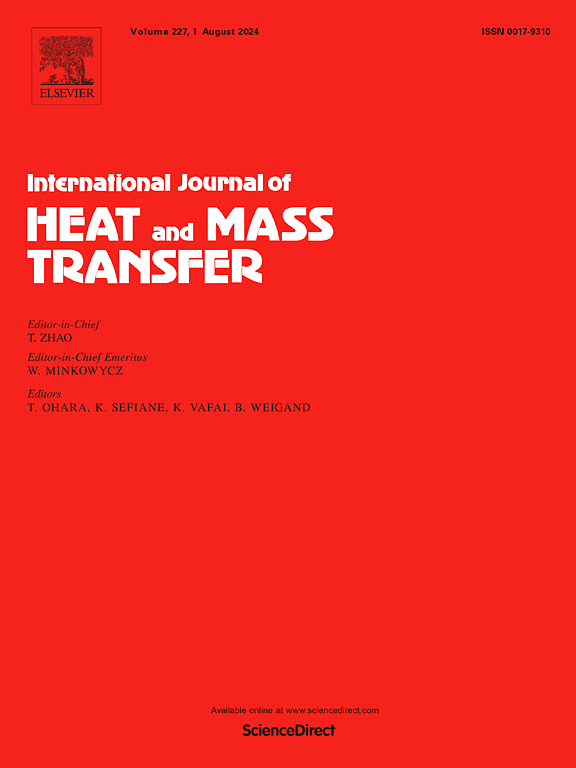纸张的交替传导和对流干燥--采用连续数据采集方法的实验分析
IF 5
2区 工程技术
Q1 ENGINEERING, MECHANICAL
International Journal of Heat and Mass Transfer
Pub Date : 2024-11-12
DOI:10.1016/j.ijheatmasstransfer.2024.126400
引用次数: 0
摘要
在纸和纸板的传统多缸干燥过程中,既要使用蒸汽加热的干燥缸进行传导干燥,也要使用空气在纸张表面的口袋中流动进行对流干燥。蒸汽加热烘缸的传导式干燥是在纸和纸板干燥过程中为其提供必要热能的关键部分。蒸汽温度和接触面的内外阻力是影响传导干燥过程的关键工艺参数。我们开发了一套实验装置来研究纸张和纸板的交替传导和对流干燥。测量了纸张的水分、温度、加热压板内的温度分布以及纸张干燥时的瞬时热通量。测定了干燥过程中的瞬时热通量、接触传热系数和干燥速率。实验结果以及与文献和商业数据的比较均已公布。测定的传导传热系数与通常用于纸张干燥建模的传统相关系数进行了比较。同样,还测定了对流传热和传质系数,并与文献数据进行了比较。除了对纸张和纸板的交替传导和对流干燥特性进行评估外,还将对可能包含的辅助能量成分进行评估。介绍了传导和对流干燥系统的实验结果。这些数据将有助于工艺开发、生产工艺强化以及纸张干燥工艺的建模和模拟。本文章由计算机程序翻译,如有差异,请以英文原文为准。
Alternating conduction and convection drying of paper – an experimental analysis with a continuous data acquisition approach
In conventional multi-cylinder drying of paper and board, both conductive drying from steam-heated dryer cylinders and convective drying by flowing air over the paper surface in the pockets are used. Conductive drying from steam-heated drying cylinders is a critical component in providing the necessary thermal energy to paper and board as they dry. Steam temperature and internal and external resistances at the contacting surface are critical process parameters influencing the conductive drying process. An experimental setup was developed to study the alternating conductive and convective drying of paper and board. Paper sheet moisture, temperature, and temperature distribution within the heated platen and the instantaneous heat flux as the sheet was being dried were measured. The instantaneous heat flux, contact heat transfer coefficient, and drying rates were determined as drying proceeds. Experimental results, as well as comparisons to literature and commercial data, are presented. The conductive heat transfer coefficients determined were compared to traditional correlations normally used in the modeling of paper drying. Similarly, the convective heat and mass transfer coefficients are also determined and compared to literature data. In addition to the evaluation of alternating conductive and convective drying characteristics of paper and board, the potential inclusion of auxiliary energy components will also be included. Experimental results from the conduction and convection drying system are presented. This data will be useful in process development, intensification of manufacturing processes, and modeling and simulation of paper drying processes.
求助全文
通过发布文献求助,成功后即可免费获取论文全文。
去求助
来源期刊
CiteScore
10.30
自引率
13.50%
发文量
1319
审稿时长
41 days
期刊介绍:
International Journal of Heat and Mass Transfer is the vehicle for the exchange of basic ideas in heat and mass transfer between research workers and engineers throughout the world. It focuses on both analytical and experimental research, with an emphasis on contributions which increase the basic understanding of transfer processes and their application to engineering problems.
Topics include:
-New methods of measuring and/or correlating transport-property data
-Energy engineering
-Environmental applications of heat and/or mass transfer

 求助内容:
求助内容: 应助结果提醒方式:
应助结果提醒方式:


